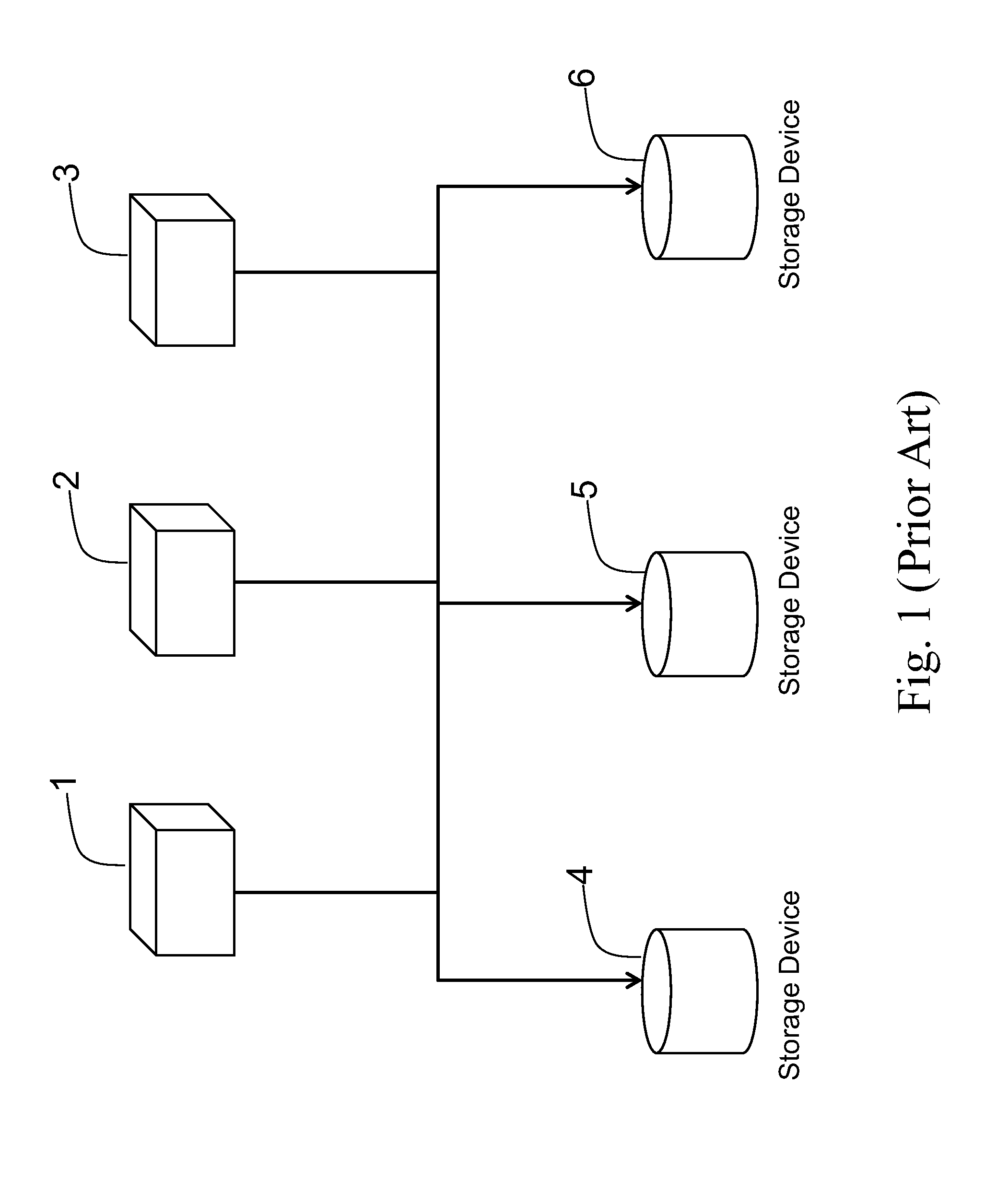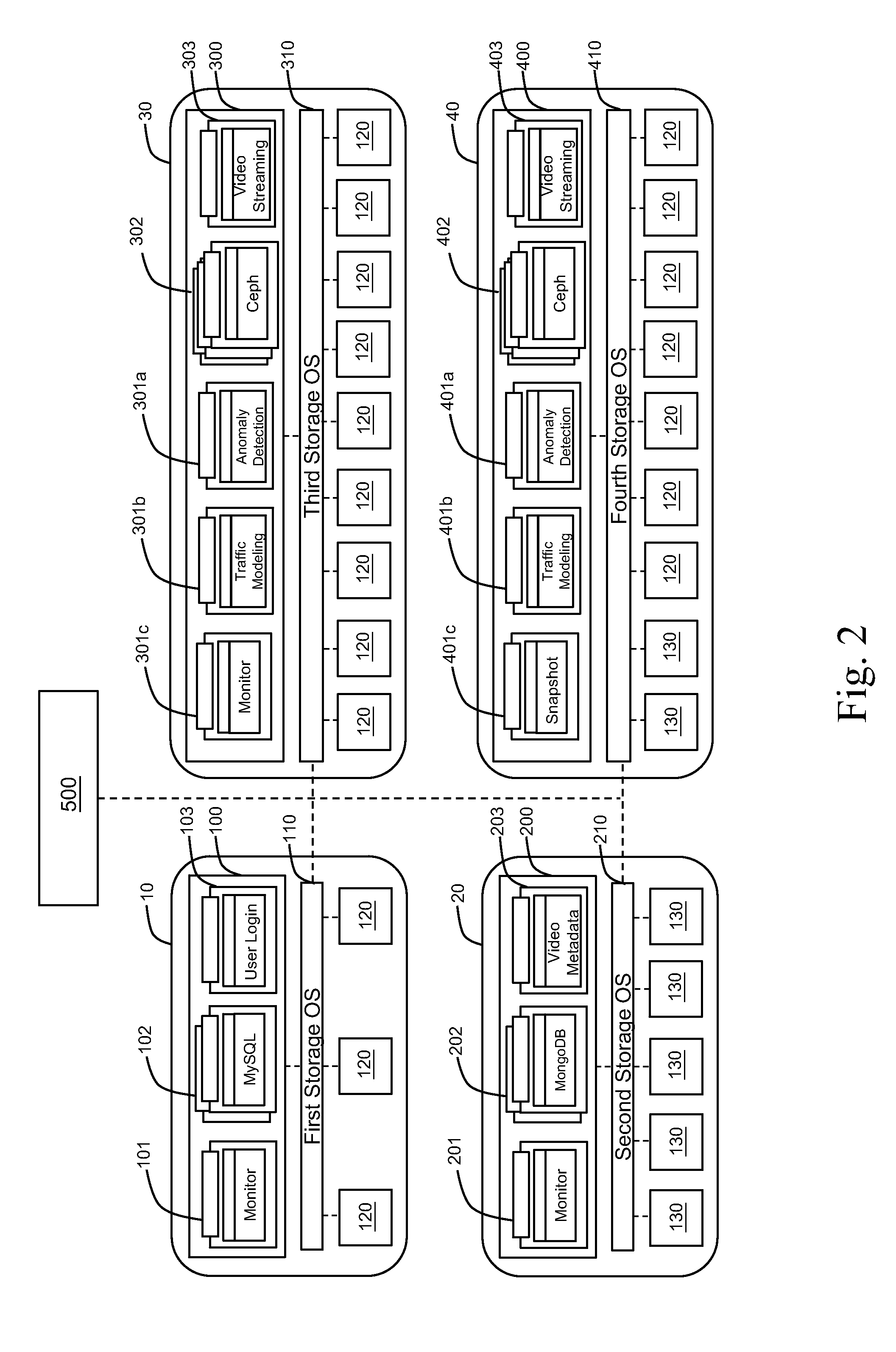Storage system having node with light weight container
a storage system and container technology, applied in the field of storage systems, can solve the problems of inability to meet the needs of storage, etc., and achieve the effects of higher network load, higher storage load, and higher latency
- Summary
- Abstract
- Description
- Claims
- Application Information
AI Technical Summary
Benefits of technology
Problems solved by technology
Method used
Image
Examples
Embodiment Construction
[0021]The present invention will now be described more specifically with reference to the following embodiments.
[0022]Please refer to FIG. 2. An embodiment of a storage system according to the present invention is disclosed. The storage system is composed of a messaging module 500 and a cluster of nodes. They are a first node 10, a second node 20, a third node 30, and a fourth node 40. It should be noticed that the number of nodes is not limited by the present invention. The four nodes are just used for illustration of the present invention. In fact, any number of nodes is workable. There are 4 nodes in the cluster and they link to one another. The connecting media may be using optical fiber or general Ethernet cables for network.
[0023]Each node has a node host and at least one node storage device. For different functionality, the number and type of the node storages may vary. Each node host is operated by a storage operating system and installed with a number of service containers....
PUM
 Login to View More
Login to View More Abstract
Description
Claims
Application Information
 Login to View More
Login to View More - R&D
- Intellectual Property
- Life Sciences
- Materials
- Tech Scout
- Unparalleled Data Quality
- Higher Quality Content
- 60% Fewer Hallucinations
Browse by: Latest US Patents, China's latest patents, Technical Efficacy Thesaurus, Application Domain, Technology Topic, Popular Technical Reports.
© 2025 PatSnap. All rights reserved.Legal|Privacy policy|Modern Slavery Act Transparency Statement|Sitemap|About US| Contact US: help@patsnap.com



